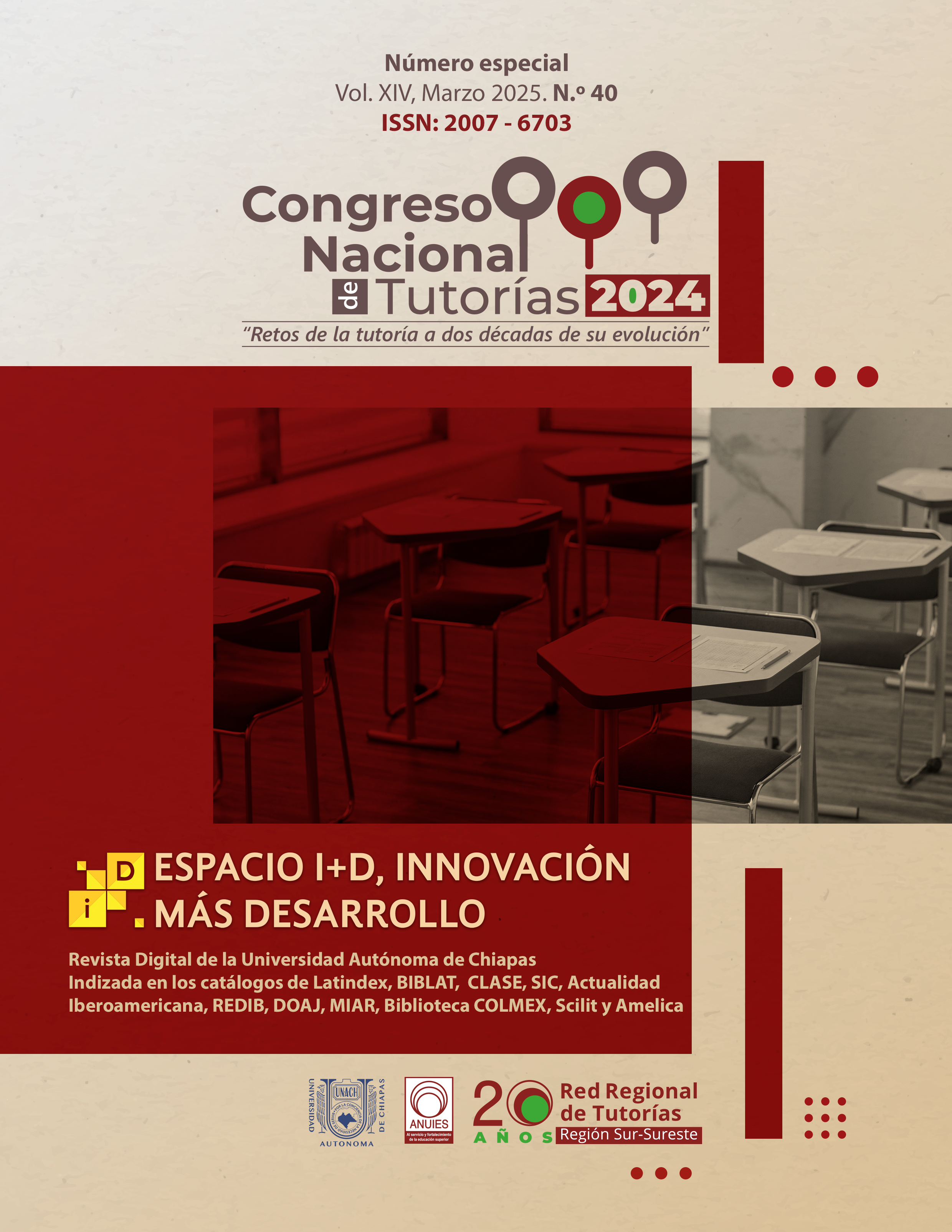Satisfacción del turista de Temazcal en Cozumel
DOI:
https://doi.org/10.31644/IMASD.31.2022.a07Palabras clave:
Temazcal, Turismo, Experiencia, Satisfacción, CozumelResumen
En México, el baño del temazcal forma parte de los usos y costumbres históricos, promocionado como actividad turística para la relajación y liberación del estrés. El objetivo general del estudio fue revelar los factores más importantes asociados con la satisfacción de los turistas luego de la experiencia del temazcal en la isla de Cozumel. Se aplicó el método cuantitativo, con una encuesta a usuarios del temazcal en la isla de Cozumel, en 2018. Como resultado se encontró que la combinación de contrastantes permite lograr un elevado nivel de satisfacción. Los responsables de la mercadotecnia podrán diseñar e impulsar estrategias apropiadas para este segmento de mercado.
Descargas
Citas
Abubakar, B. y Mavondo, F. (2014). Tourism Destinations: Antecedents to Customer Satisfaction and Positive Word-of-Mouth. Journal of Hospitality Marketing & Management, 23(8), 833–864. https://doi.org/10.1080/19368623.2013.796865
Alegre, J. y Cladera, M. (2009). Analysing the effect of satisfaction and previous visits on tourist intentions to return. European Journal of Marketing, 43(5/6), 670–685. https://doi.org/10.1108/03090560910946990
Alén, E. (2018). Reflections on “assessing tourist behavioral intentions through perceived service quality and customer satisfaction”. Journal of Global Scholars of Marketing Science, 28(4), 358–362. https://doi.org/10.1080/21639159.2018.1509364
Anaya-Aguilar, R., Gemar, G. y Anaya-Aguilar, C. (2021). Validation of a Satisfaction Questionnaire on Spa Tourism. International Journal of Environmental Research and Public Health, 18(9). https://doi.org/10.3390/ijerph18094507
Bigné, J. E. y Andreu, L. (2004). Modelo cognitivo-afectivo de la satisfacción en servicios de ocio y turismo. Modelo Cognitivo-Afectivo De La Satisfacción En Servicios De Ocio Y Turismo(21), 89-120. https://dialnet.unirioja.es/servlet/articulo?codigo=1143456
Campón-Cerro, A. M., Di-Clemente, E., Hernández-Mogollón, J. M. y Folgado-Fernández, J. A. (2020). Healthy Water-Based Tourism Experiences: Their Contribution to Quality of Life, Satisfaction and Loyalty. International Journal of Environmental Research and Public Health, 17(6). https://doi.org/10.3390/ijerph17061961
Chen, C. M., Lee, H. T., Chen, S. H. y Huang, T. H. (2011). Tourist behavioural intentions in relation to service quality and customer satisfaction in Kinmen National Park, Taiwan. International Journal of Tourism Research, 13(5), 416–432. https://doi.org/10.1002/jtr.810
Cohen, M. y Bodeker, G. (2008). Understanding the Global Spa Industry: Spa Management. BH.
Domínguez-Lara, S. A. y Merino-Soto, C. (2015). ¿Por qué es importante reportar los intervalos de confianza del coeficiente alfa de Cronbach? Revista Latinoamericana De Ciencias Sociales, Niñez Y Juventud, 13(2), 1326–1328. https://revistaumanizales.cinde.org.co/rlcsnj/index.php/Revista-Latinoamericana/article/view/2030
Frost, G. J. (2004). The spa as a model of an optimal healing environment. Journal of Alternative and Complementary Medicine (New York, N.Y.), 10 Suppl 1, S85-92. https://doi.org/10.1089/1075553042245908
Gilmore, J. H. y Pine II, J. (1998). Welcome to the experience economy. Harvard Business Review, 78(4), 97–105. https://store.hbr.org/product/welcome-to-the-experience-economy/98407?sku=98407-HCB-ENG
González, M. E. A., Comesaña, L. R. y Brea, J. A. F. (2007). Assessing tourist behavioral intentions through perceived service quality and customer satisfaction. Journal of Business Research, 60(2), 153–160. https://doi.org/10.1016/j.jbusres.2006.10.014
Han, H., Kiatkawsin, K., Jung, H. y Kim, W. (2018). The role of wellness spa tourism performance in building destination loyalty: the case of Thailand. Journal of Travel & Tourism Marketing, 35(5), 595–610. https://doi.org/10.1080/10548408.2017.1376031
Han, H., Kiatkawsin, K., Kim, W. y Lee, S. (2017). Investigating customer loyalty formation for wellness spa: Individualism vs. collectivism. International Journal of Hospitality Management, 67, 11–23. https://doi.org/10.1016/j.ijhm.2017.07.007
Huh, J., Uysal, M. y McCleary, K. (2006). Cultural/Heritage Destinations: Tourist Satisfaction and Market Segmentation. Journal of Hospitality & Leisure Marketing, 14(3), 81–99. https://doi.org/10.1300/J150v14n03_07
INEGI. (2017). Anuario estadístico y geográfico de Quintana Roo 2017. Instituto Nacional de Estadística y Geografía. https://www.inegi.org.mx/contenido/productos/prod_serv/contenidos/espanol/bvinegi/productos/nueva_estruc/anuarios_2017/702825095130.pdf
Kamata, H. y Misui, Y. (2015). Why Do They Choose a SPA Destination? The Case of Japanese Tourists. Tourism Economics, 21(2), 283–305. https://doi.org/10.5367/te.2014.0450
Kotler, P. y Keller, K. (2012). Dirección de marketing (14a. ed.). Pearson Educación. https://ebookcentral.proquest.com/lib/kxp/detail.action?docID=4870055
Kozak, M., Bigné, E. y Andreu, L. (2005). Satisfaction and Destination Loyalty. Journal of Quality Assurance in Hospitality & Tourism, 5(1), 43–59. https://doi.org/10.1300/J162v05n01_04
Lagrosen, Y. y Lagrosen, S. (2016). Customer perceptions of quality – a study in the SPA industry. European Business Review, 28(6), 657–675. https://doi.org/10.1108/EBR-05-2016-0070
Lee, M., Han, H. y Lockyer, T. (2012). Medical Tourism—Attracting Japanese Tourists For Medical Tourism Experience. Journal of Travel & Tourism Marketing, 29(1), 69–86. https://doi.org/10.1080/10548408.2012.638564
Lloret-Segura, S., Ferreres-Traver, A., Hernández-Baeza, A. y Tomás-Marco, I. (2014). El análisis factorial exploratorio de los ítems: una guía práctica, revisada y actualizada. Anales De Psicología, 30(3). https://doi.org/10.6018/analesps.30.3.199361
Lo, A., Wu, C. y Tsai, H. (2015). The Impact of Service Quality on Positive Consumption Emotions in Resort and Hotel Spa Experiences. Journal of Hospitality Marketing & Management, 24(2), 155–179. https://doi.org/10.1080/19368623.2014.885872
Mak, A. H. N., Wong, K. K. F. y Chang, R. C. Y. (2009). Health or self-indulgence? The motivations and characteristics of spa-goers. International Journal of Tourism Research, 11(2), 185–199. https://doi.org/10.1002/jtr.703
Maunier, C. y Camelis, C. (2013). Toward an identification of elements contributing to satisfaction with the tourism experience. Journal of Vacation Marketing, 19(1), 19–39. https://doi.org/10.1177/1356766712468733
Méndez-Martínez, C. y Rondón-Sepúlveda, M. A. (2012). Introducción al análisis factorial exploratorio. Revista Colombiana De Psiquiatría, 41(1), 197–207. https://doi.org/10.1016/S0034-7450(14)60077-9
Meng, F., Tepanon, Y. y Uysal, M. (2008). Measuring tourist satisfaction by attribute and motivation: The case of a nature-based resort. Journal of Vacation Marketing, 14(1), 41–56. https://doi.org/10.1177/1356766707084218
Okech, R. N. (2014). Promoting the Spa Tourism Industry: Focus on Coastal Resorts in Kenya. Athens Journal of Tourism, 1(1), 53–63. https://doi.org/10.30958/ajt.1-1-4
Perić, G., Gašić, M., Stojiljković, M. y Nešić, I. (2018). The impact of employee satisfaction on the tourist satisfaction with the services of spa tourism. Ekonomika Poljoprivrede, 65(2), 617–632. https://doi.org/10.5937/ekoPolj1802617P
Petrick, J. F., Morais, D. D. y Norman, W. C. (2001). An Examination of the Determinants of Entertainment Vacationers’ Intentions to Revisit. Journal of Travel Research, 40(1), 41–48. https://doi.org/10.1177/004728750104000106
Rodrigues, H., Brochado, A. y Troilo, M. (2020). Listening to the murmur of water: essential satisfaction and dissatisfaction attributes of thermal and mineral spas. Journal of Travel & Tourism Marketing, 37(5), 649–661. https://doi.org/10.1080/10548408.2019.1633986
SEDETUR. (2020). Indicadores Turísticos Enero - Diciembre 2019. SEDETUR. https://sedeturqroo.gob.mx/ARCHIVOS/indicadores/Indicador-Tur-Dic-2019.pdf
Silvestri, C., Aquilani, B. y Ruggieri, A. (2017). Service quality and customer satisfaction in thermal tourism. The TQM Journal, 29(1), 55–81. https://doi.org/10.1108/TQM-06-2015-0089
Su, L. y Hsu, M. K. (2013). Service Fairness, Consumption Emotions, Satisfaction, and Behavioral Intentions: The Experience of Chinese Heritage Tourists. Journal of Travel & Tourism Marketing, 30(8), 786–805. https://doi.org/10.1080/10548408.2013.835228
Tsai, H., Suh, E. y Fong, C. (2012). Understanding Male Hotel Spa-Goers in Hong Kong. Journal of Hospitality Marketing & Management, 21(3), 247–269. https://doi.org/10.1080/19368623.2012.624295
Tung, V. W. S. y Ritchie, J. B. (2011). Exploring the essence of memorable tourism experiences. Annals of Tourism Research, 38(4), 1367–1386. https://doi.org/10.1016/j.annals.2011.03.009
Weaver, D. B. y Lawton, L. J. (2011). Visitor Loyalty at a Private South Carolina Protected Area. Journal of Travel Research, 50(3), 335–346. https://doi.org/10.1177/0047287510362920
Žabkar, V., Brenčič, M. M. y Dmitrović, T. (2010). Modelling perceived quality, visitor satisfaction and behavioural intentions at the destination level. Tourism Management, 31(4), 537–546. https://doi.org/10.1016/j.tourman.2009.06.005

Publicado
Versiones
- 01-02-2023 (2)
- 30-09-2022 (1)
Cómo citar
Número
Sección
Licencia

Esta obra está bajo una licencia internacional Creative Commons Atribución-NoComercial-CompartirIgual 4.0.























